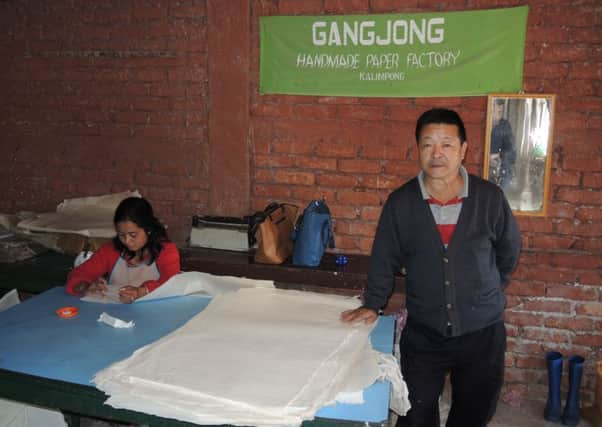On The Wildside


It enjoys a pleasant subtropical climate which can be seen in the local markets with an abundance of tropical fruit and vegetables, and in the local horticultural nurseries which specialise in orchids and other tropical garden plants.
We stayed for two nights in Kalimpong, finding a room in the Hotel Tres where the staff were preoccupied in decorating the garden for a big wedding on our second evening there.
Advertisement
Hide AdAdvertisement
Hide AdOur main interest was to visit Dr Graham’s School which sat in spacious grounds high on a ridge overlooking the town and lush green valleys below, while to the north was a spectacular panorama of the Himalayan peaks in Sikkim and Nepal, particularly the dazzling white Kanchenjunga which at 28,169 feet (8,586 metres) is the third highest peak in the world.
Dr John Graham was a Scottish missionary who founded his school here in 1900 to support and educate orphaned children, but it is now a public school catering for children of all ages. It has a strong botanical connection in that Dr Graham’s daughter, Betty, married George Sherriff, one of the most important Scottish explorers and plant collectors in the Himalayas.
We had heard that somewhere in the town was a traditional hand-made paper factory, and on enquiring in the hotel it turned out to a five minute walk away. We were taken to a cluster of small buildings and given a guided tour.
The paper is made from the bark of a small shrub growing at higher elevations called Edgeworthia gardneri (named after two British botanists), a relative of Daphne, the Spurge Laurel. The bark is collected and boiled for six hours in a huge vat outdoors, then brought indoors and pounded to a pulp by hand and the resulting liquid has the consistency of wallpaper paste.
Advertisement
Hide AdAdvertisement
Hide AdBamboo frames are then immersed in the tank and removed with a thin layer of the pulp, then these sheets are squeezed flat in a huge press and then hung out to dry in the sun.
There is a good market for the paper, one of its qualities being that it is naturally insect proof. Buddhist monasteries in Bhutan and Tibet use the paper for their religious manuscripts which can last for centuries. We were able to buy some of the paper and some of their colourful Christmas cards from their small shop!
There is a change of speaker at the next SWT evening meeting in Duns Parish Church Hall which is on Thursday, February 2. The new title the talk is ‘Natural Engineers – bringing the Beaver back’ by Susan Davies, Director of Conservation at the Scottish Wildlife Trust.